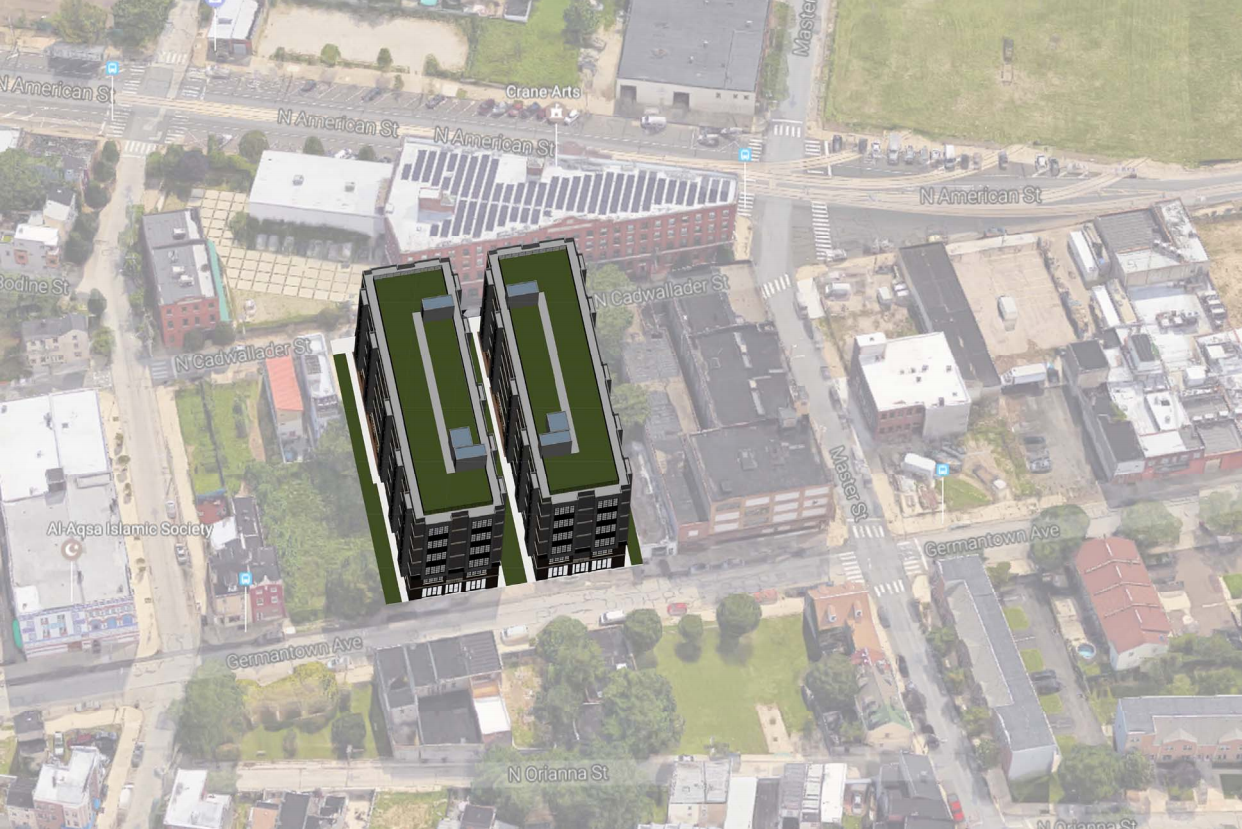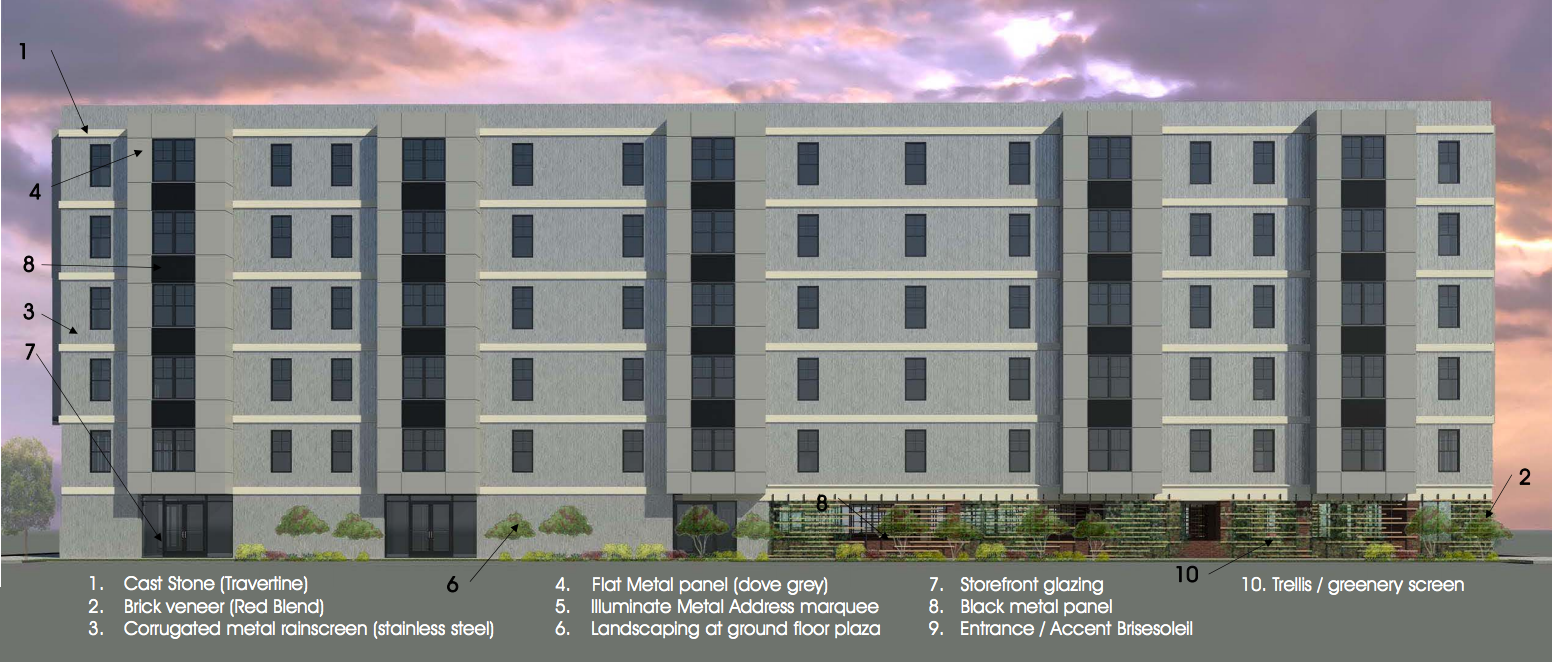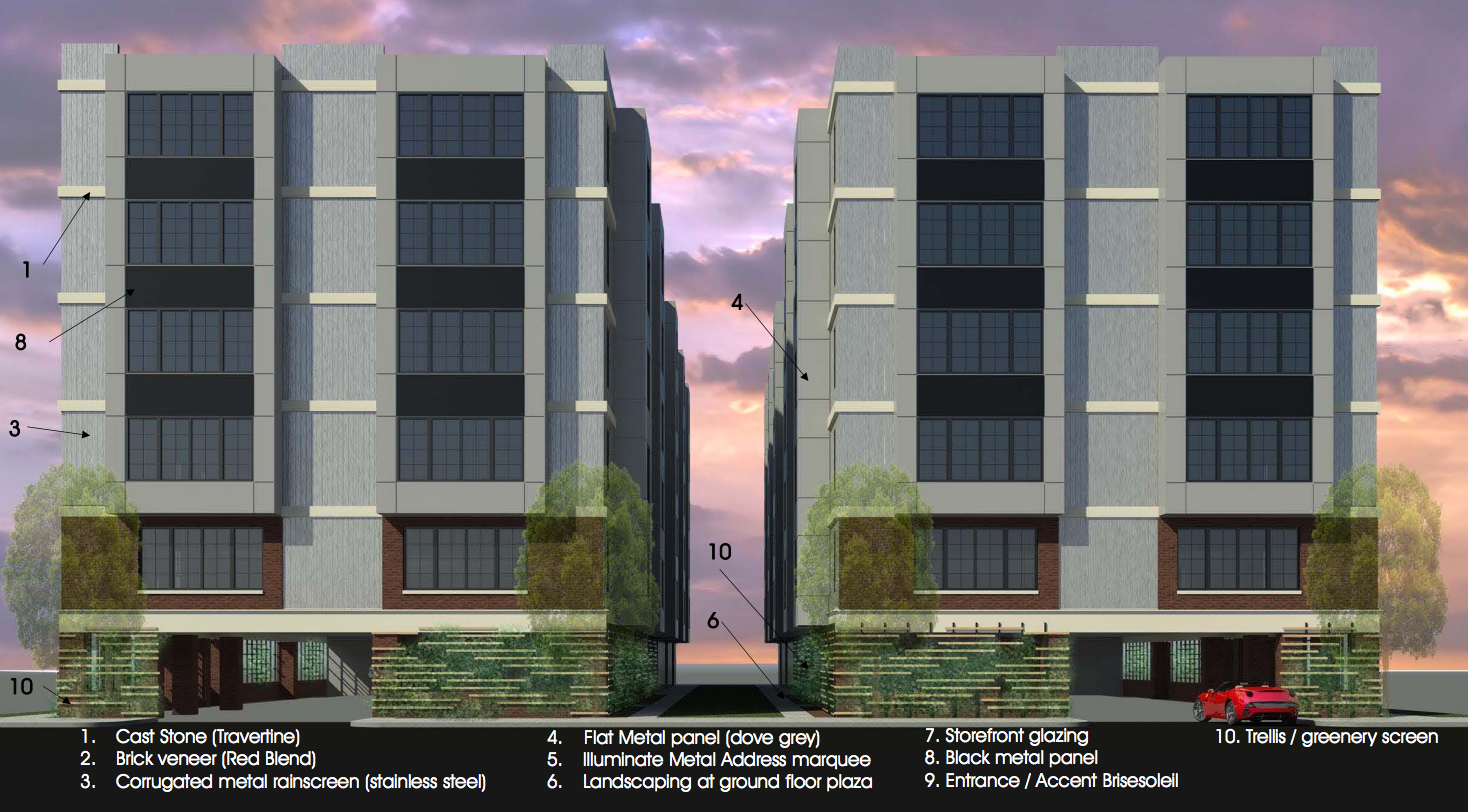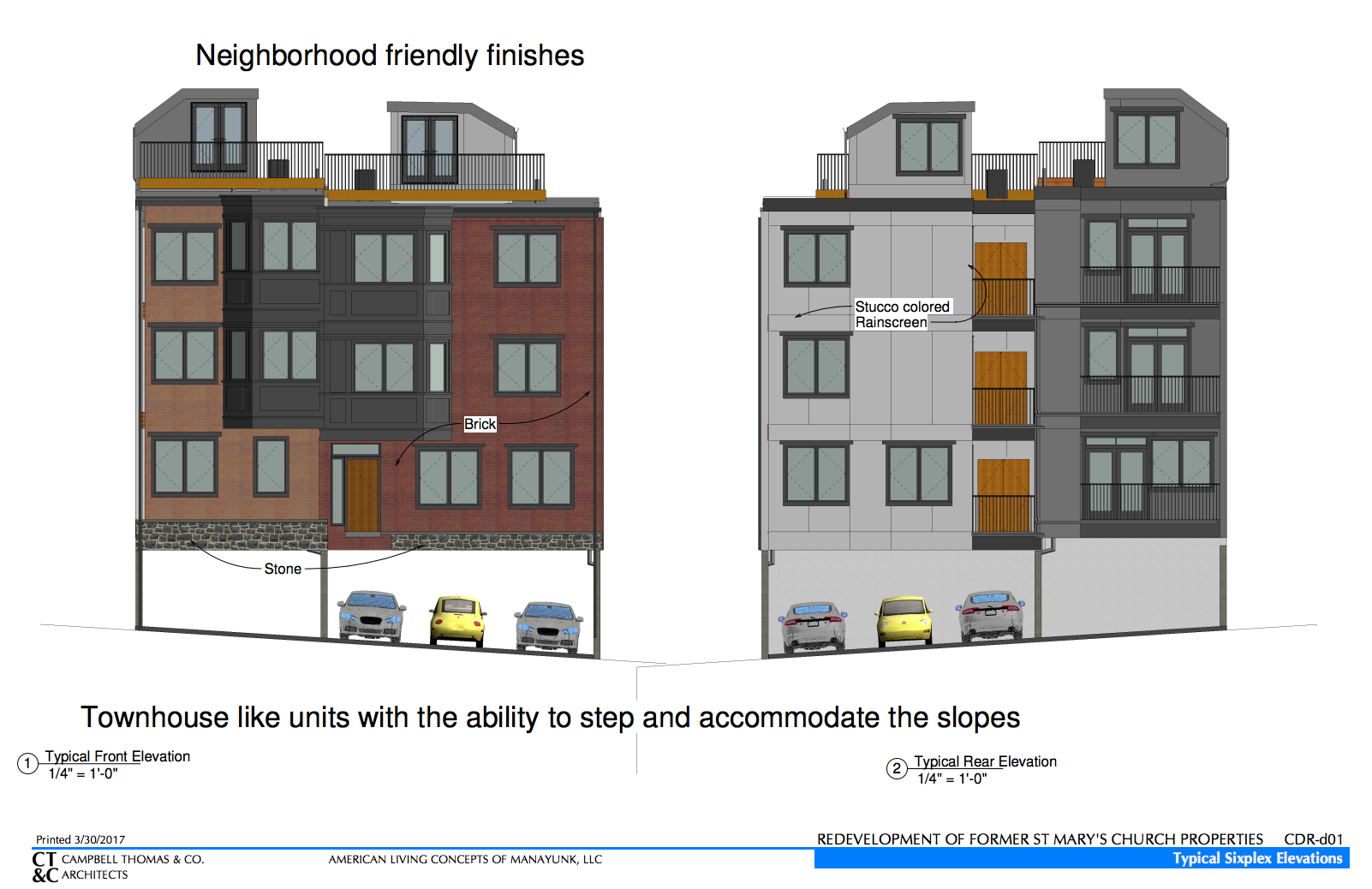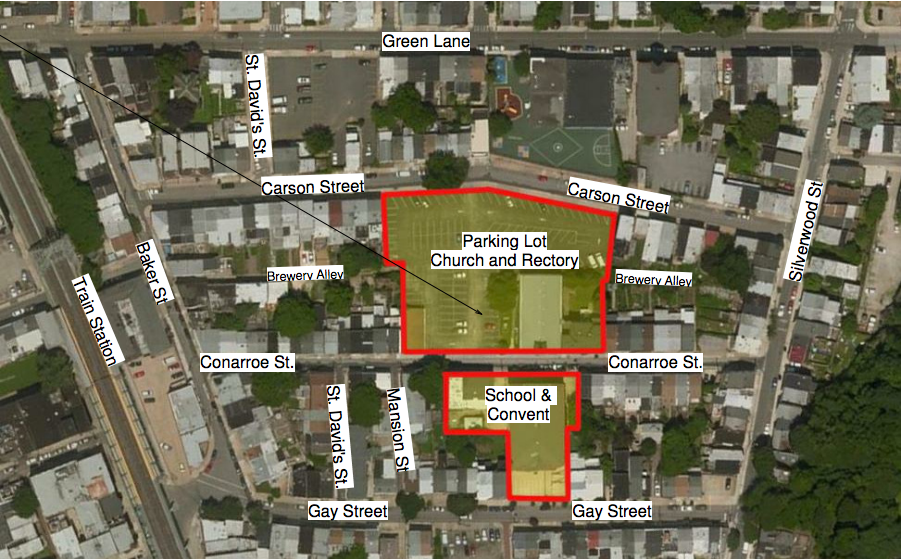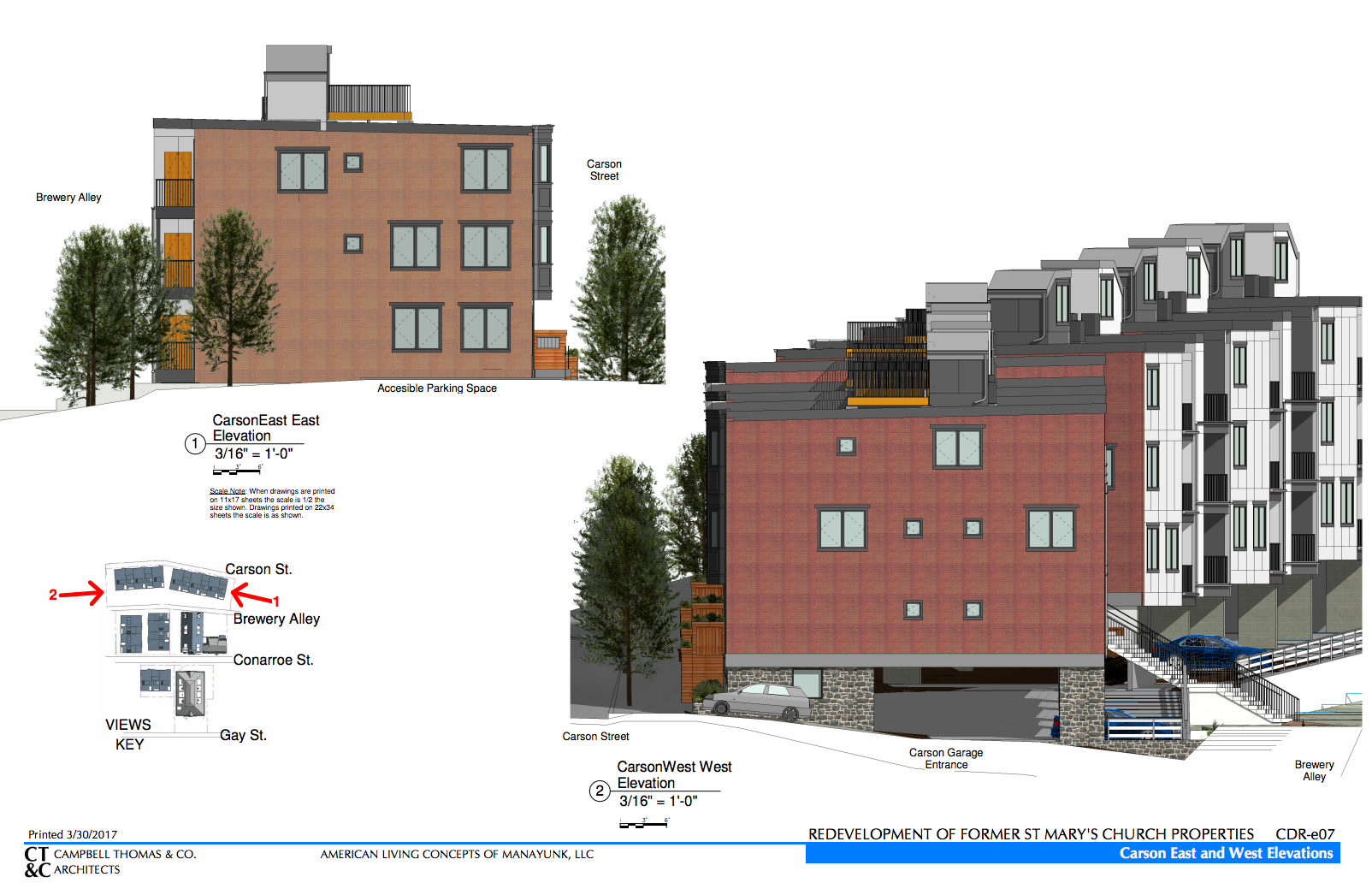St. Mary’s Manayunk redevelopment and South Kensington project asked back to Civic Design Review
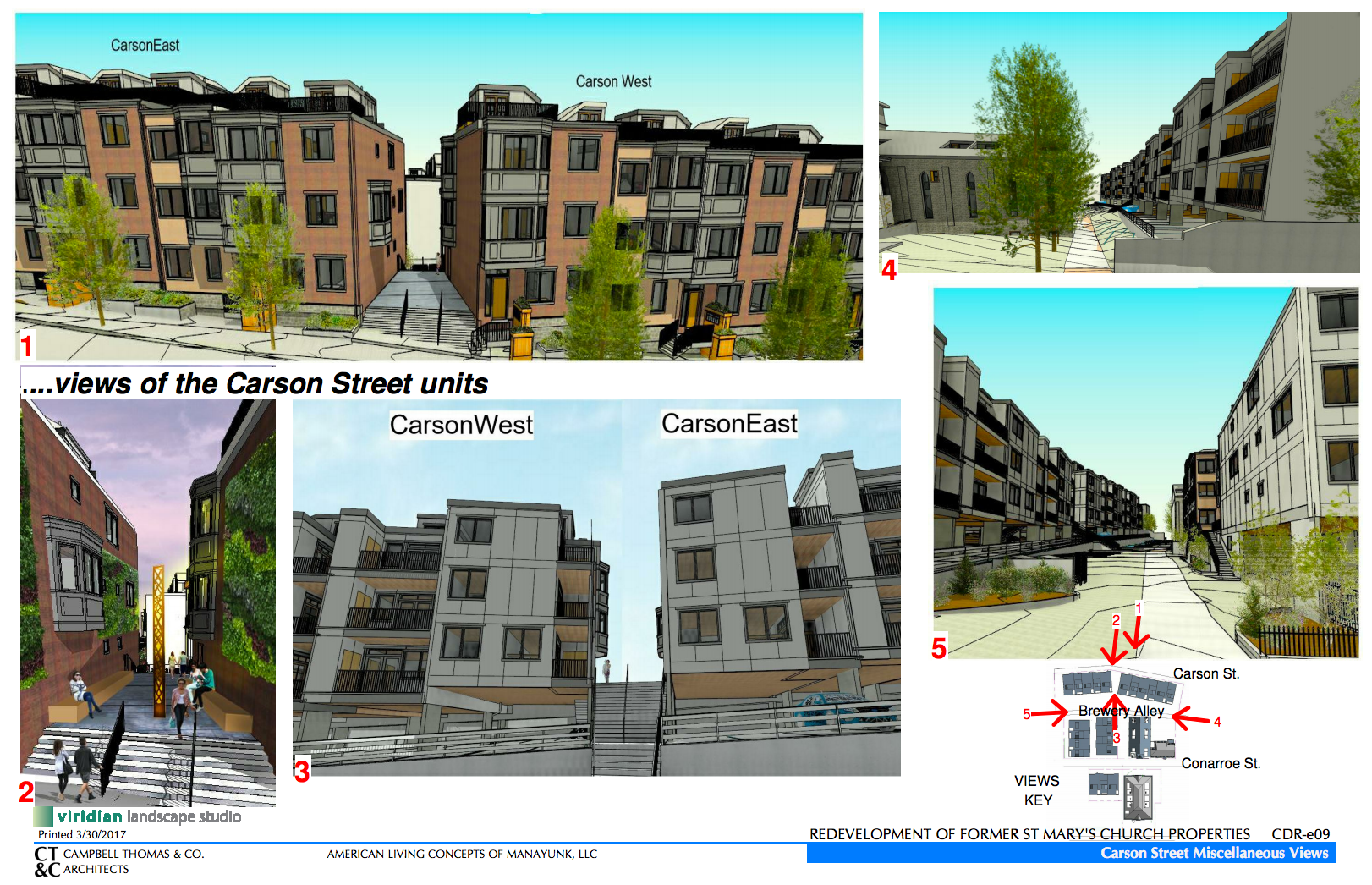
There never was a Civic Design Review (CDR) meeting that passed without strife, but April’s Tuesday meeting was especially contentious. Two multi-family projects, one on Germantown Avenue in South Kensington and one in Manayunk, faced criticism from both community members and the experts on the CDR panel. Both were asked to return for continued design review, the board’s only formal power.
The South Kensington project, presented by KCA Design Associates, is an apartment complex comprised of twin buildings housing 120 units combined. The rear of the site faces Cadwallader Street and the Crane Arts Building. A thin strip of pedestrian space lies between the two buildings, while parking would be underneath and would exit onto Cadwallader.
The lot is zoned IRMX, a new designation created in the 2012 code to allow for a mix of industrial and residential space.
The presenter, project coordinator Logan Dry of KCA, emphasized how much the building would try to respect the surrounding built environment, using masonry, iron, redbrick —at least on the bottom floors.
“We want to give a modern interpretation of old industrial warehouse buildings,” said Dry. “The grids on the windows replicate larger industrial warehouse windows. We felt that was a good way to pay homage to the existing context.”
Dry said that the buildings wouldn’t be out of place in the neighborhood, which is already home to several ex-industrial buildings that have been converted into multi-unit housing like the Umbrella Factory, five blocks to the west.
The site would include 36 car parking spots and 44 bicycle parking spots. The buildings would offer a mix of one-, two-, and three-bedroom units, while the ground floors of each building would have 5,200 square feet industrial space. A wood and metal trellis would shield the parking area from view, while street trees are promised between the two hulks.
The project, which is on 1413 and 1427 Germantown Avenue, is being developed under the aegis of 1413 Germantown LLC.
The proposal’s troubles began earlier than usual, when Planning Commission staffer Matthew Pickering informed the CDR committee that the paperwork submitted by KCA was insufficient for the required complete streets review. (CDR Chair Nancy Rogo Trainer said she couldn’t recall any other presenter neglecting the requirement.) Pickering also noted that Cadwallader Street is seeing a fair amount of new development that fronts on the street and expressed a desire to see the 1413 Germantown project not treat that street “as a back-alley space.”
The review only went downhill from there. Architect Cecil Baker teed off against the IRMX designation, saying it is just being used to shoehorn in additional density in where it wouldn’t otherwise fit with surrounding neighborhood patterns. Besides the Crane Arts building, much of the rest of the project’s surroundings are comprised of rowhouses.
“What’s tremendously disturbing to me is that by-right it’s allowing a density I find oppressive,” said Baker. “For me this is not putting into play a Philadelphia that we love. It truly is cramming too much on this lot. Something is not right in the state of Denmark.”
The only community comment, besides the RCO representative (who also didn’t like it), was Joshu Harris, legislative director for Councilman Kenyatta Johnson. He didn’t attend CDR in that capacity, however.
“I’m here not just as a neighbor, but as someone who pulled out of a deal to purchase 1428 Cadwallader in part because of my concerns about this project,” said Harris. “The rest of the block, besides the Crane Arts building, is relatively low height and low density. I have some grave concerns there is a mismatch here and there’s not really any thought being given to integration with the rest of the block.”
Not only did no one on the committee like the proposal, but they uniformly agreed that the project didn’t even seem to be ready to come under the scrutiny of the CDR process.
“I don’t feel like you’ve thought this through,” said Trainer.
The committee voted to not conclude the CDR process, and the developer will be required to present their revised plans in future (although they are not required to change anything, as the committee’s power is purely advisory).
The second project considered by CDR this month was a large new housing proposal for the former site of St. Mary’s of the Assumption in Manayunk. The room was packed with neighborhood opponents, which wasn’t a surprise given that a recent community meeting on the subject resulted in a non-binding vote of 6 to 145 against the project.
The project’s architect, Jim Campbell, gave the presentation and highlighted the firm’s commitment to historic preservation. St. Mary’s parish was consolidated into nearby St. John the Baptist Church in 2012, part of the wave of Catholic closures that swept the city in recent years, and was finally closed in 2015. Built in 1849, the church was recently added to the Philadelphia Register of Historic Places along with its side yard (a former burial ground), and the Rectory. The school on the site is not on the local historic register, but the developer promises to preserve that as well.
The 100 housing units proposed would be split between 66 in newly constructed buildings and 34 within the adaptively reused historic buildings. There would be 47 one-bedroom units and 54 two-bedroom units.
Campbell argued that it wouldn’t be economically feasible to build anything besides multi-family housing because of the large amount of industrial debris that will have to be cleared from under the current parking lot. This was once the site of Liebert and Obert brewery, which was demolished after World War II.
Most of all, Campbell tried to hedge against the community’s fears about parking, a perennial issue in this hilly neighborhood of historic rowhouses and narrow streets. He pointed out again and again that they would be building far, far more parking than they are required to: 132 parking spaces for 100 houses.
The spaces would largely be provided under the new units on Carson and Conarroe streets, which are three story apartments buildings.
The community members who stood up to testify, however, were having none of it.
“I’m appalled by the density of this development and the impact it will have on the neighborhood’s character,” said Thomas Garthside, a 30-year resident of Manayunk and the first neighbor to give a statement. “I believe that zoning laws exist for a reason and the reason is to preserve the neighborhood.”
Much of the testimony dwelt on how difficult it is to leave Manayunk in the mornings and that even with all the parking provided, the project will inevitably make traffic worse.
The president of the Manayunk Neighborhood Council, Kevin Smith, pointed out that the Upper Northwest District plan called for transit-oriented development at the Wissahickon Transportation Center and the Ivy Ridge regional rail stop. But it does not call for such a thing at the Manayunk regional rail station near St. Mary’s, because of the existing density.
“I know I live in the city, I don’t expect to be able to park in front of my house,” said Dana Debeck, a resident who says she now has to walk at least a half mile to get to her home from her car now that the St. Mary’s parking lot is no longer accessible. “I’m not against transit-oriented development, but our neighborhood averages two cars per household as comparison to .7 per household for the city as a whole.”
Eight more people testified against the project as well. CDR committee was sympathetic to the developer, noting that the site is challenging to build upon, and to the neighbors’ concerns.
After calling Manayunk the San Francisco of Philadelphia, Cecil Baker said that he felt the community’s options for stopping the project or forcing further concessions are constrained because of Councilman Curtis Jones’ legislative rezoning of the area. Because the project won’t be going before the Zoning Board of Adjustment, whose findings can be challenged in court, their options are limited.
In the end, CDR chair Trainer said she thought they’d seen enough and that the process should be concluded. “Leaving it as a parking lot for community use is not an economically viable option for anyone.”
But in a narrow vote, the committee decided to not conclude the process and to have the developer come back the next month.
WHYY is your source for fact-based, in-depth journalism and information. As a nonprofit organization, we rely on financial support from readers like you. Please give today.



